 | |
| Author | Joseph Hatton |
|---|---|
| Language | English |
| Genre | Novel |
| Publisher | John & Robert Maxwell (U.K.) / Harper (U.S.) |
Publication date | 1885 |
| Pages | 208 pp |
John Needham's Double is an 1885 novel and 1891 play by Joseph Hatton, and 1916 silent film.
 | |
| Author | Joseph Hatton |
|---|---|
| Language | English |
| Genre | Novel |
| Publisher | John & Robert Maxwell (U.K.) / Harper (U.S.) |
Publication date | 1885 |
| Pages | 208 pp |
John Needham's Double is an 1885 novel and 1891 play by Joseph Hatton, and 1916 silent film.
The novel is subtitled "A Story Founded on Fact" and is based on the story of Irish financier and politician John Sadleir, who committed suicide. [1]
The Saturday Review negatively reviewed the book, calling it "simply the story of John Sadleir .. with certain highly improbable, not to say impossible, additions and corrections of Mr. Hatton's own. The story itself is neither interesting not instructive, nor yet amusing.... However, Mr. Hatton must not be taken too seriously. Lovers of cheap sensation will not be hypercritical, and will probably find John Needham's Double exciting enough." [1] Punch's review called it a shilling dreadful but was slightly more positive: "there is no room for tall writing, or mere padding, when a real good story has to be told in two hundred small pages of print large enough to defy twilight and railway-carriage lamps." [2]

Augustus Thomas modified Hatton's play for A.M. Palmer's production in New York starring Edward Smith Willard, which debuted at Palmer's Theatre in February 1891 [3] [4] [5] and played for just over a month. [6]
The cast included Willard playing the dual roles of John Needham and Joseph Norbury, Marie Burroughs as Kate Norbury, Burr McIntosh as Col. Calhoun Booker, and Royce Carleton as Mr. Grant. [7]
A silent film version directed by Lois Weber premiered in April 1916, starring Tyrone Power, Agnes Emerson, and Frank Elliott. The screenplay was by Olga Printzlau. [9] [10] [11]
The Woman's Christian Temperance Union (WCTU) is an international temperance organization. It was among the first organizations of women devoted to social reform with a program that "linked the religious and the secular through concerted and far-reaching reform strategies based on applied Christianity." It plays an influential role in the temperance movement. Originating among women in the United States Prohibition movement, the organization supported the 18th Amendment and was also influential in social reform issues that came to prominence in the progressive era.

Herbert Allen Giles was a British diplomat and sinologist who was the professor of Chinese at the University of Cambridge for 35 years. Giles was educated at Charterhouse School before becoming a British diplomat in China. He modified a Mandarin Chinese romanization system established by Thomas Wade, resulting in the widely known Wade–Giles Chinese romanization system. Among his many works were translations of the Analects of Confucius, the Lao Tzu , the Chuang Tzu, and, in 1892, the widely published A Chinese–English Dictionary.

Lean on Me is a 1989 American biographical drama film directed by John G. Avildsen, written by Michael Schiffer, and starring Morgan Freeman. It is based on the story of Joe Louis Clark, a real life inner city high school principal in Paterson, New Jersey, whose school is in danger of being placed into receivership of the New Jersey state government unless students improve their test scores on the New Jersey Minimum Basic Skills Test. This film's title refers to the 1972 Bill Withers song of the same name, which is used in the film.

George Burroughs was a non-ordained Puritan preacher who was the only minister executed for witchcraft during the course of the Salem witch trials. He is remembered especially for reciting the Lord's Prayer during his execution, something it was believed a witch could never do.

Henry Burr was a Canadian singer, radio performer and producer. He was born Harry Haley McClaskey and used Henry Burr as one of his many pseudonyms, in addition to Irving Gillette, Henry Gillette, Alfred Alexander, Robert Rice, Carl Ely, Harry Barr, Frank Knapp, Al King, and Shamus McClaskey. He produced more than 12,000 recordings, by his own estimate, and some of his most popular recordings included "Just a Baby's Prayer at Twilight", "Till We Meet Again" with Albert Campbell, "Beautiful Ohio", "I Wonder Who's Kissing Her Now" "When I Lost You" and "In The Shade Of The Old Apple Tree". A tenor, he performed as a soloist and in duets, trios and quartets.

John Sadleir was an Irish financier and politician, who became notorious as a political turncoat, and committed suicide after the failure of his financial speculations. He served as the model for several fictional portrayals of speculators who come to ruin.
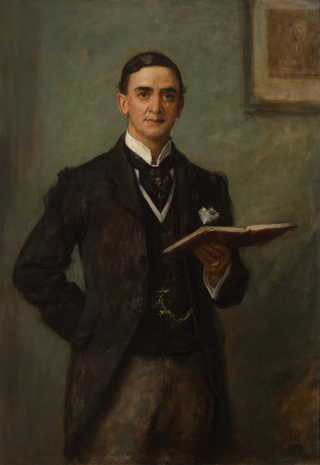
Sir John Hare, born John Joseph Fairs, was an English actor and theatre manager of the later 19th– and early 20th centuries.

Victory is a psychological novel by Joseph Conrad first published in 1915, through which Conrad achieved "popular success."
Sean Gregory Palmer is an American stage and screen actor, singer, and dancer. Palmer's most recognizable role on television is that of Stanford Blatch's boyfriend, Marcus, on the HBO series Sex and the City.

Alfred Hitchcock Presents, sometimes called The New Alfred Hitchcock Presents, is an American television anthology series that originally aired on NBC for one season from September 29, 1985 to May 4, 1986, and on the USA Network for three more seasons, from January 24, 1987, to July 22, 1989, with a total of four seasons consisting of 76 episodes. The series is an updated version of the 1955 eponymous series.
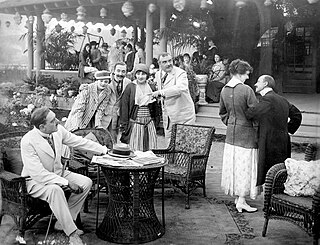
The New Adventures of J. Rufus Wallingford is a 1915–1916 American silent film serial produced by the Wharton Studio in Ithaca, New York, and starring Burr McIntosh and Max Figman. The serial is based on the character J. Rufus Wallingford, originating from the series of stories by George Randolph Chester.

The Wild Party is a musical with book, lyrics, and music by Andrew Lippa.
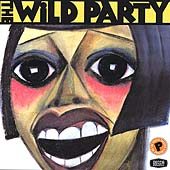
The Wild Party is a musical with a book by Michael John LaChiusa and George C. Wolfe and music and lyrics by LaChiusa. It is based on the 1928 Joseph Moncure March narrative poem of the same name. The Broadway production coincidentally opened during the same theatrical season (1999–2000) as an off-Broadway musical with the same title and source material.
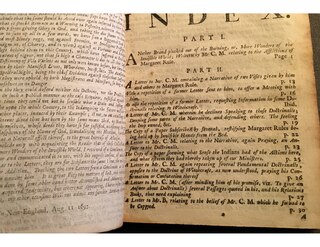
Robert Calef was a cloth merchant in colonial Boston. He was the author of More Wonders of the Invisible World, a book composed throughout the mid-1690s denouncing the recent Salem witch trials of 1692–1693 and particularly examining the influential role played by Cotton Mather.

Joseph Paul Christopher Hatton was an English novelist and journalist. He was editor of many English publications including The Sunday Times from 1874 to 1881 and then served as a correspondent for several American periodicals.

John Leslie Palmer was an English theatre critic and prolific author. Under his own name, he wrote extensively about early English actors and about British literary figures. He also wrote fiction under the pseudonyms 'John Somers' and 'Christopher Haddon' and collaboratively as 'Francis Beeding' and 'David Pilgrim'.

George Burroughs Torrey (1863–1942) was an American painter, best known for his portraits. He has been called the "painter of presidents", because he painted portraits of Theodore Roosevelt, William H. Taft, and Herbert Hoover.

Live at the Bijou is a 1977 live album by jazz saxophonist Grover Washington Jr. It was released via Kudu Records label.
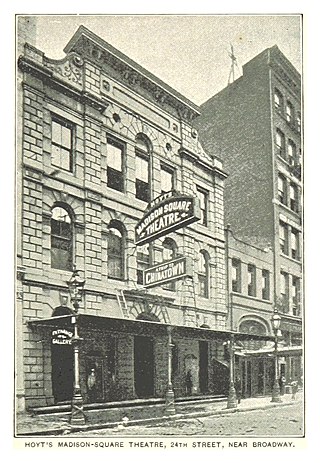
The Madison Square Theatre was a Broadway theatre in Manhattan, on the south side of 24th Street between Sixth Avenue and Broadway. It was built in 1863, operated as a theater from 1865 to 1909, and demolished in 1909 to make way for an office building. The Madison Square Theatre was the scene of important developments in stage technology, theatre design, and theatrical tour management. For about half its history it had other names including the Fifth Avenue Theatre, Daly's Fifth Avenue Theatre, Hoyt's Madison Square Theatre, and Hoyt's Theatre.

Marie Burroughs was an American stage actress in the late 19th century. She played prominent roles in many plays, although she never became a first-tier star.